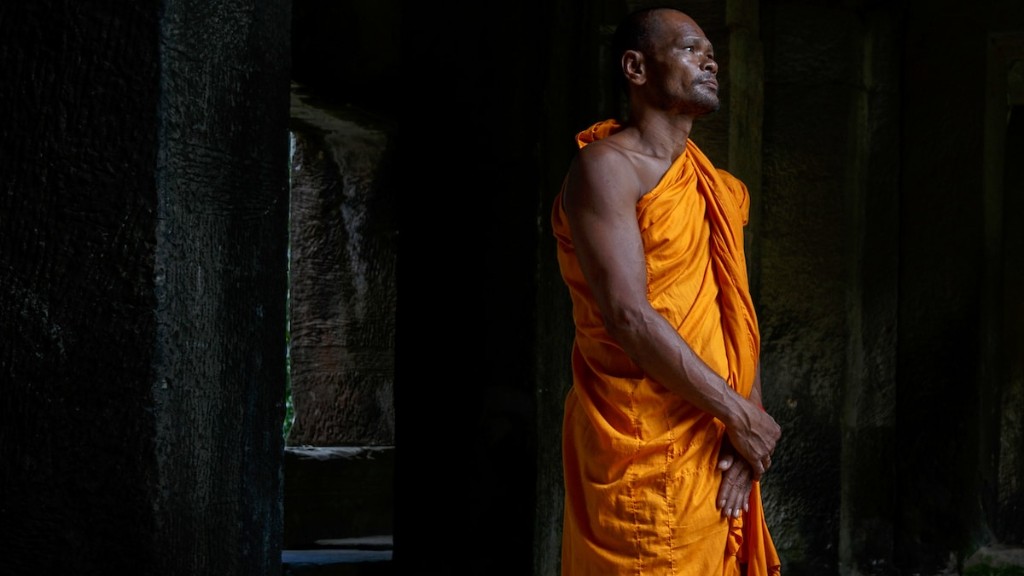Hinduism is one of the oldest and most pervasive religions in the world, with a large and devoted following across the subcontinent. As such, its pantheon of gods and goddesses is expansive, with thousands of figures existing in classical Hindu mythology. Of these, however, few are as widely revered as the god Shiva, who is seen as the ultimate deity of all.
Shiva is a complex figure and is strongly associated with physical as well as mental transformation. Known as the destroyer, he has power over death and destruction in all its forms and is ultimately responsible for the creation of the world. He is also a lover, a creator and a protector, embodying a range of facets which Hindu followers revere and celebrate.
The origin of Shiva’s worship dates back hundreds of years and varies enormously in terms of the methods employed and the exact interpretations of his purpose within the Hindu faith. Many followers identify Shiva as the parmeshwar (supreme god); others simply worship him as an avatar alongside others, such as Vishnu and Brahma.
Shiva is rarely worshipped alone. He is usually prayed to alongside other gods, including his sons Ganesha and Kartikay, and his consort Shakti. This reflects his role in the trinity of gods at the centre of Hindu religion.
In common with his other representations, Shiva is depicted in many forms. His mortal form is said to be the naked, ash-covered ascetic, an embodiment of austerity and self-denial. The most common of his symbols is the lingam, an iconic symbol associated with creation and destruction.
Although a complex figure, Shiva’s dedication to destruction and re-creation is of particular importance to his disciples. His role in the Hindu pantheon is hugely integral and his physical embodiment is said to bring balance, harmony and justice to the universe.
Within Hinduism, Shiva is a revered figure to be feared, celebrated and respected. While his methods of destruction can be frightening, his ultimate remit is to bring about positive change and spiritual growth; he is seen as a unifying source of all creation.
Aspects of Shiva
Shiva is also believed to wear a garland of skulls, among other symbols, representing his power over life and death. He is said to wear a tiger-skin loincloth, further representing strength and courage. The image of Shiva holding a trident is also popular and is said to be a representation of his power to create and destroy the universe.
Shiva is considered the ruler of death and is believed to destroy negative forces such as anger, jealousy, and pride. He is also said to be the patron of ascetics and renouncers, as well as being a protector of the law.
In Hinduism, Shiva is a complex and mysterious figure, represented in art and symbolism in many ways. He is worshipped by Hindus of all castes and is seen as a unifying factor in the religion. His power and influence over the pantheon of gods and goddesses is vast and is integral to the religion.
The Shiva Purana
The earliest written record of Shiva comes from the much revered scripture, The Shiva Purana, written some time around the fourth century CE. It is a collection of mythology and tales around the character, mostly centring around his devotion to the goddess Pārvatī. In the stories, Shiva’s strength, courage and dedication to his goddess wife is highlighted, as is the story of their great love.
The Shiva Purana has greatly influenced how Shiva is seen in modern Hindu culture, with tales of his exploits forming some of the most important Hindu mythology. The stories help to define him as a character and also show his supreme power over other gods and goddesses. This story also serves to highlight Shiva as a moral and spiritual force, who defends the righteous and punishes the wicked.
In Hindu culture, Shiva remains a powerful and important figure, revered and respected throughout the sub-continent. His combination of power, strength and all-encompassing moralism makes him a fitting candidate as the supreme god of Hinduism.
Influence of Shiva
Shiva’s influence and power can be found all across Hindu culture, from the scriptures to art and literature. He is the subject of countless works of literature and art, from the temples and sculptures he is depicted in to the many pieces devoted to his ascetic lifestyle. He is also the subject of many popular films and television series, with depictions often centered around his devotion to Pārvatī as well as his love for her.
Shiva’s influence can also be felt in Hindu music, with many devotional songs and chants dedicated to him. He is also a popular figure in Hindu rituals, with his image often being used to mark the start and end of special events. Finally, his image is often used to ward off the evil eye, believed by many Hindus to bring bad luck.
Life of Shiva
In terms of Shiva’s personal life, very little is known. It is said that he mostly lives in the realm of the gods and goddesses, although he is said to spend some time on Earth. He is also often depicted with a cow, a symbol of sustenance and fertility.
Shiva is not only revered as the god of Hinduism but also as one of the great sages of the ancient world. He is said to have taught many lessons about morality and righteousness which have formed the basis of the religion’s teachings. In addition, his teachings are often seen as providing comfort and reassurance to those living in hardship or difficult circumstances.
Today, Shiva remains one of the most important figures in Hinduism and is worshipped by millions of people. He is seen as a powerful and mysterious figure, with an ability to bring about positive transformation and growth for Hindus of all castes and classes. It is this mixture of power, potential and moralism that makes Shiva such an integral part of Hinduism.
Conclusion
Shiva is an incredibly important figure in the Hindu religion and is worshipped by millions of people all over the world. He is seen as a powerful and mysterious god, with an ability to destroy and create life, as well as to protect and maintain the peace and harmony of the universe. He has strong connections with physical as well as mental transformation, and his presence and teachings are integral to the Hindu faith.


